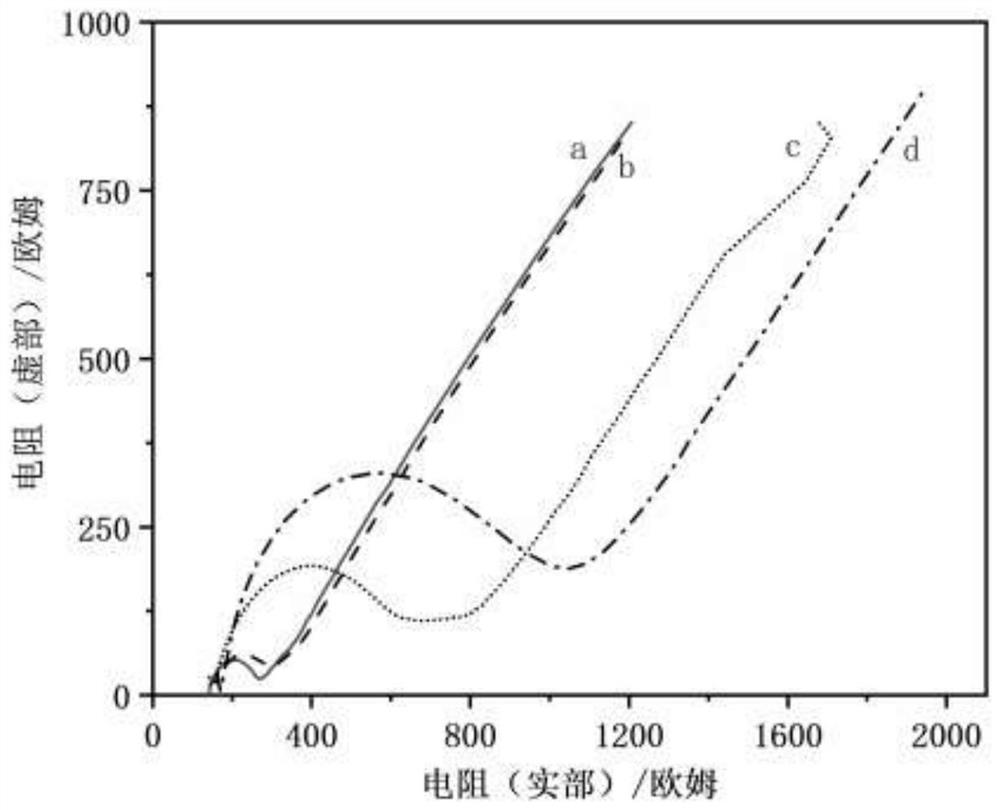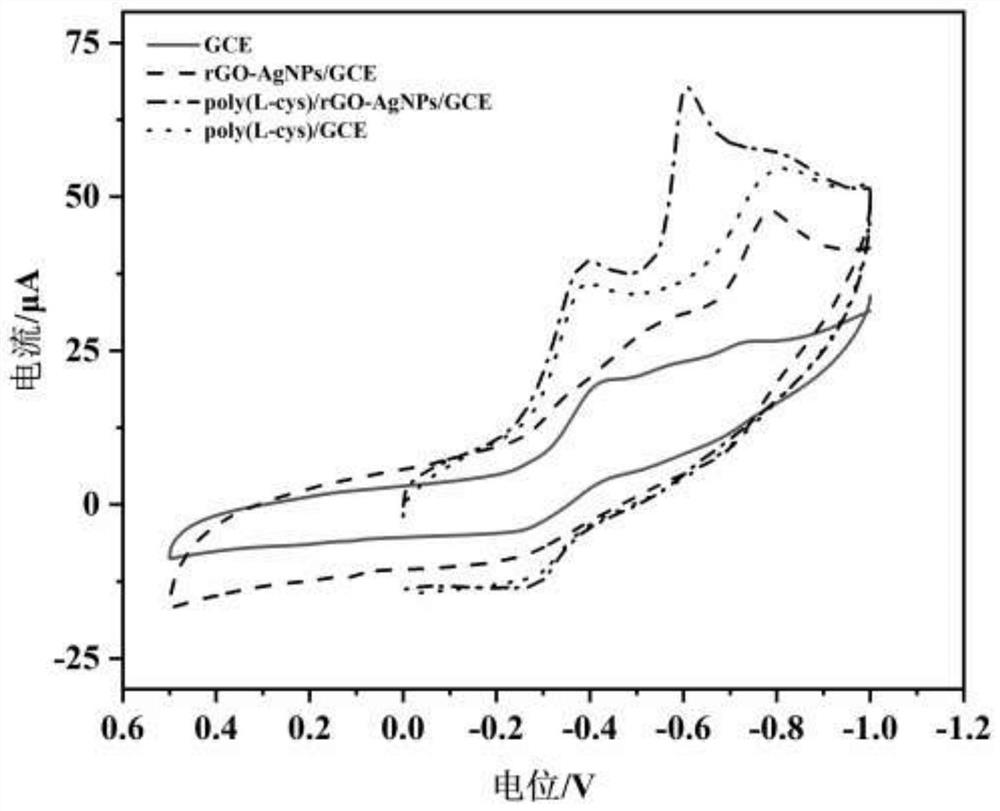Poly-l-cysteine and reduced graphene oxide supported nano-silver modified glassy carbon electrode and its application
A technology of glassy carbon electrode and cysteine, which is applied in the direction of nanotechnology, nanotechnology, nanotechnology, etc. for materials and surface science. problems, to achieve good electrochemical stability, good biocompatibility, and strong catalytic activity
- Summary
- Abstract
- Description
- Claims
- Application Information
AI Technical Summary
Problems solved by technology
Method used
Image
Examples
Embodiment 1
[0040] Example 1 Preparation of poly-L-cysteine and reduced graphene oxide supported nano-silver modified glassy carbon electrode, comprising the following steps:
[0041] Step 1, in 20mL 2mg / mL graphene oxide solution, add 100mg L-cysteine, 100mgAgNO 3 The powder and 400 μL of ammonia water with a mass percentage of 25% were left to stand in a water bath at 90°C for 10 hours to obtain reduced graphene oxide-loaded nano-silver, which was washed with water and then dried;
[0042] Step 2, disperse the reduced graphene oxide-loaded nano-silver treated in step 1 in 50mL of aqueous solution, and obtain a reduced graphene oxide-loaded nano-silver solution through ultrasonication until the dispersion is uniform;
[0043] Step 3: Grinding and polishing the bare glassy carbon electrode on 0.05 μm alumina powder, then ultrasonically treating it in absolute ethanol and water for 1 min, then rinsing with water and drying in the air;
[0044] Step 4, take 10 μL of the reduced graphene ...
Embodiment 2
[0046] Embodiment 2 Modifies the evaluation of electrode performance:
[0047] In order to explore the influence of each material on the electrode response, the cyclic voltammetry was used to study and compare the GCE, rGO-AgNPs / GCE, poly(L-Cys) / GCE and poly(L-Cys) / rGO-AgNPs / GCE The electrode was in potassium ferricyanide solution (1mmol L -1 ) in the electrochemical response signal. Such as figure 1 As shown, these four modified electrodes all have a pair of good redox peaks in potassium ferricyanide solution. On GCE, the potential difference between the redox peaks is less than 90 mV, indicating that the electrode has been activated. Compared with GCE, the peak current of rGO-AgNPs / GCE decreased, and the peak potential difference became wider; when poly(L-Cys) was modified on GCE, the peak potential difference was similar to that of GCE, but the peak current was significantly increased; When poly(L-Cys) and rGO-AgNPs are co-modified on GCE, the peak potential difference ...
Embodiment 3
[0049] Embodiment 3 modified electrode detects to chloramphenicol:
[0050] The electrochemical sensors of GCE, rGO-AgNPs / GCE, poly(L-Cys) / GCE and poly(L-Cys) / rGO-AgNPs / GCE were investigated by cyclic voltammetry (CV). The response signal of chloramphenicol and explore how the detection signal of chloramphenicol is improved. Such as image 3 As shown, chloramphenicol was at -0.763V on GCE (Ep 1 ) and -0.432V (Ep 2 ) has two weak reduction peaks, of which the first reduction peak is very weak; Ep on rGO-AgNPs / GCE 1 The peak current was significantly enhanced, but a certain degree of negative shift occurred, while the Ep 2 No significant increase in peak current; Ep on poly(L-Cys) / GCE 2 The peak current is significantly enhanced, and the peak shape is also more beautiful, Ep 1 Although the peak current is enhanced, the peak shape becomes smooth and unsightly, and the peak potential also shifts negatively; when poly(L-Cys) and rGO-AgNPs are combined on GCE, the two reductio...
PUM
 Login to View More
Login to View More Abstract
Description
Claims
Application Information
 Login to View More
Login to View More - R&D
- Intellectual Property
- Life Sciences
- Materials
- Tech Scout
- Unparalleled Data Quality
- Higher Quality Content
- 60% Fewer Hallucinations
Browse by: Latest US Patents, China's latest patents, Technical Efficacy Thesaurus, Application Domain, Technology Topic, Popular Technical Reports.
© 2025 PatSnap. All rights reserved.Legal|Privacy policy|Modern Slavery Act Transparency Statement|Sitemap|About US| Contact US: help@patsnap.com



